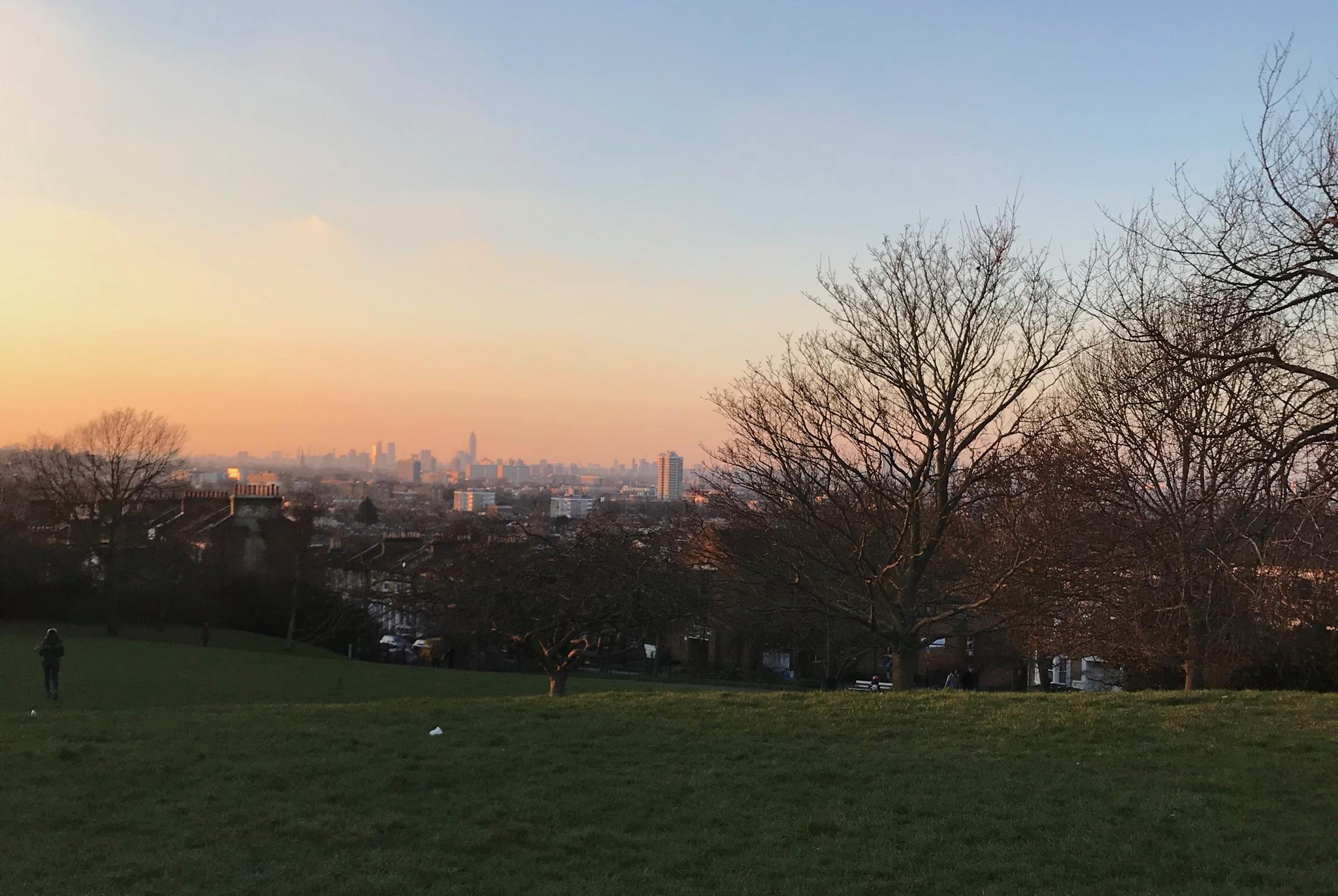Jess Payn: 'On Telegraph Hill, 2019'

They arrive in twos and threes. There is the occasional lone gazer: smoking, peering down the hill, content standing sealed in her own thoughts. The others murmur to one another, with occasional louder interruptions. Sirens bleating, while the traffic grunts. You caught the synthetic rustling of a puffer jacket. What will the view sound like? Had those who gathered ever wondered that?
They had come to peer at the muddle of architecture beneath, to feel their reflections guided by the interplay of light on the assorted series of windows across the urban sprawl. You visit a sunset to watch yourself shrink. You imagine its stillness might displace your sense of stuckness. But there is no hush; and when London, stretched out beneath you, fails to catch the attention you are aiming towards it – the rectangles number too many, the haze of habitation extends unevenly, for too far – the noises become more insistent. ‘We are alone,’ you hear someone say. Despite appearances, ‘we are alone.’ Even in front of the people gathered round.
The city wears nostalgia’s colours, that murky pink glow of the light’s own leave-taking. The farthest edges are the most luminous: where copper meets blue to create a greenish interim. A marker of a city is its conditions for anonymity. London meets your stare with an insistent blankness. You might assume that to render something small is to make it manageable: here, the capital, population of eight million or so, is reduced to a view – a single frame of vision. Where a close-up means confrontation, the long shot creates an easy realm for reverie: what’s diminutive feels distant, comfortingly framed. Still, watching the view is almost excruciating, queasy in the comforts it offers. It is ethereal; enervating, but mute.
These others, standing about, lingering despite the chill, come and go and replace one another. Do the same motives draw them here? It is difficult to decide whether their visit is a ritual view-taking – a weekend habit, repeated to register the differences between one sunset and the next – or a more opportunistic spectatorship. Perhaps they registered the clear winter day and the creep of the clock and thought ‘Today is a day to watch the city, in the shapes and shades of the dying light’. As the shadows spread, the noises start to still. Many leave before darkness fully unfurls.
Jess Payn is a writer and critic based in south London. She is the books editor of theartsdesk and has written for The London Magazine, The i and Splice Magazine.
